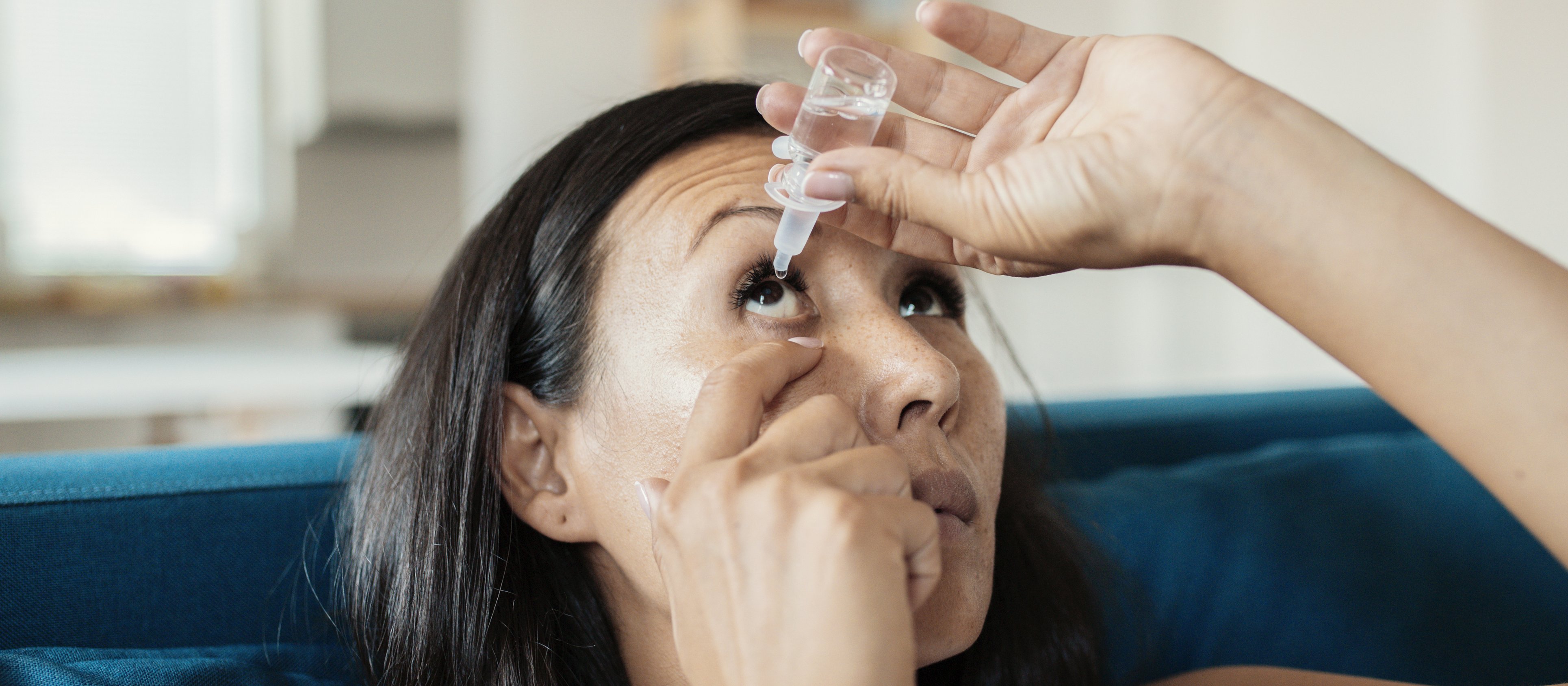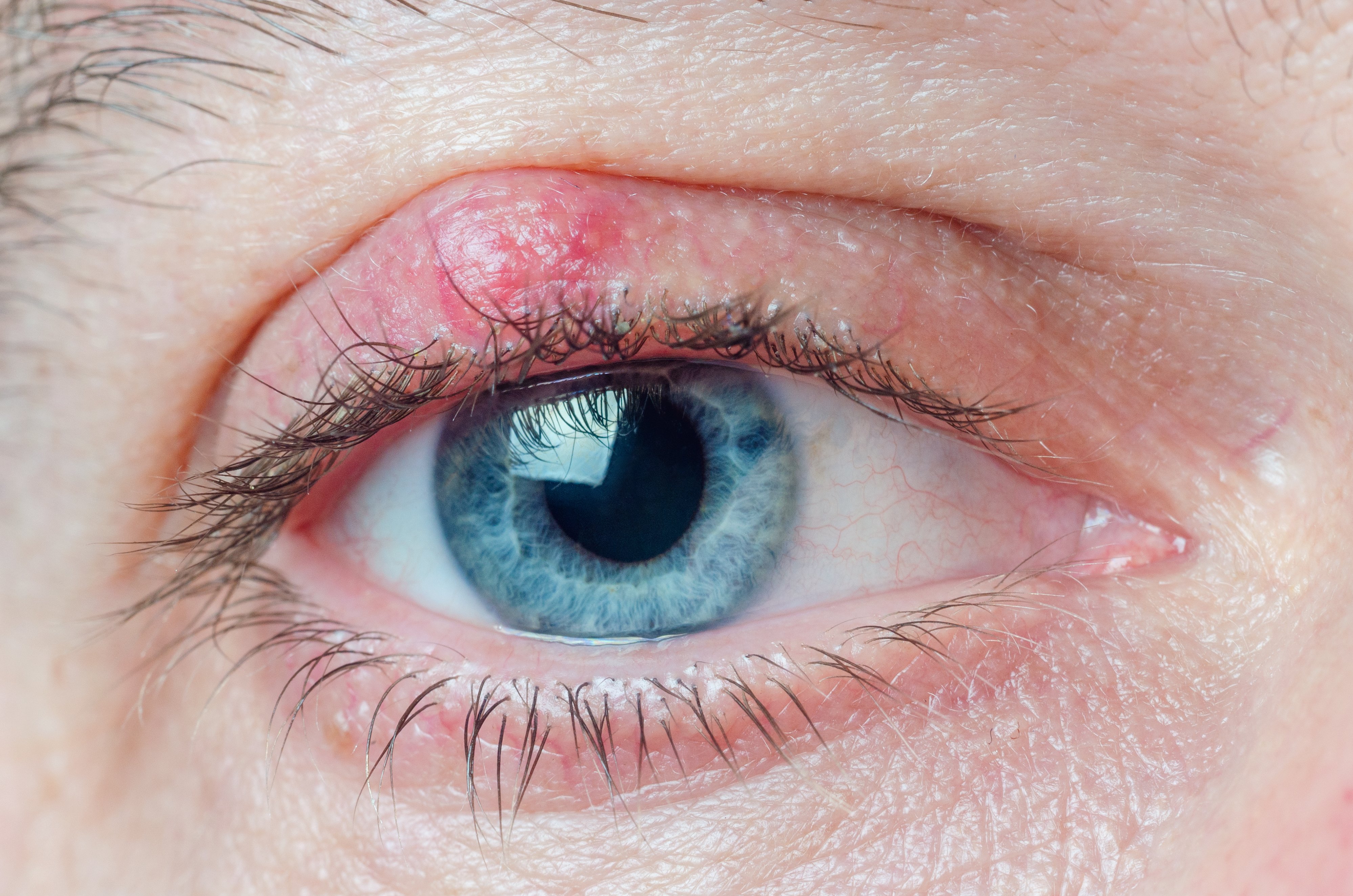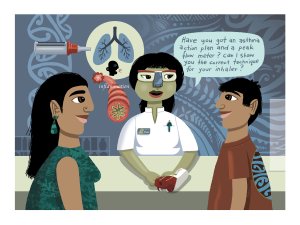Academic pharmacist Nataly Martini discusses the medical management of asthma in adults and adolescents, which has evolved to prioritise early anti-inflammatory treatment. She also explains how to improve patient outcomes by proactively identifying poor asthma control and supporting equitable access to education and treatment
In approximately 0.3 to 3 per cent of people, strep throat may lead to acute rheumatic fever
In approximately 0.3 to 3 per cent of people, strep throat may lead to acute rheumatic fever

Blepharitis, the inflammation of the eyelids, is a condition affecting many. Dunedin pharmacist Darshana Kanjee explores what pharmacy teams can do to help
The eyes contain many oil-producing meibomian glands – the oil maintains our tear film. In blepharitis, it is more solid, making the glands prone to blockage. Once blocked, the tear film evaporates more quickly, making it uncomfortable.
Blepharitis can develop at any age, but most often occurs in people in their 40s or 50s. It can feel quite uncomfortable and tends to recur if you have had it once already.
The blocked gland is also an ideal environment for bacteria. These feed on the oil and secrete acidic waste products, which accumulate in the gland and along the eyelid. The change in pH causes inflammation on the eye’s surface and along the lid. It usually affects both eyes along the edges of the eyelids.
Blepharitis is characterised by itchy, red burning eyelids, which may stick together in the morning. They can look swollen, greasy and crusty, and the eyes may feel gritty. There may be excessive tearing and flakes around the eyes and eyelids. Some people who have blepharitis find they are more sensitive to light.
The condition can be categorised into two types, and patients can have a combination of both:
- anterior blepharitis, caused by a bacterial infection (staphylococcus) or a skin condition (seborrheic dermatitis). Often, the outside front edge of the eyelids is affected
- posterior blepharitis occurs when the glands on the inside edge of the eyelids are affected. The meibomian glands become irritated and inflamed and can overproduce the oily substance and become blocked.
Blepharitis can be down to several things, but generally, the cause is the meibomian glands around the eye producing too much oil. This then allows bacteria to grow, causing infection. Other causes include viral infection, Demodex mite infection, and skin problems such as seborrheic dermatitis, eczema or psoriasis. It can also be due to irritation caused by make-up, debris, or other allergens. A person may be more at risk if they have diabetes, wear contact lenses, spend a lot of time in air-conditioning or are going through menopause or hormonal changes.
- Blepharitis may often look bad when inflamed, but it is not contagious. A patient should seek help if:
- current symptoms cannot be controlled by daily eye hygiene
- eyelashes have fallen out or have started to grow abnormally
- there is the appearance of styes, chalazions, conjunctivitis or excessive tearing or dryness
- there is a secondary infection in the eyes, and the eyesight becomes blurry.
While it is not usually serious, blepharitis can be uncomfortable and embarrassing. Reassure patients that it usually does not cause permanent damage to their eyesight, and they can’t pass it on to others. It is important to explain that blepharitis is a chronic longterm condition. Once you have it, it can come and go, and keeping it under control is essential to prevent it from flaring and the eye from becoming infected.
The primary treatment for blepharitis is good hygiene and reducing the triggers that aggravate symptoms. Keeping the eyelids clean is essential; this can help unblock meibomian glands and remove dirt. The following technique is helpful:
- start by applying a warm compress gently on closed eyelids, which will help soften the skin and any crusty deposits, and help make excess oil easier to remove. The warmth helps unplug blocked glands and allows oily secretions to flow more easily. Place the compress over the eyes for five to 10 minutes. Use a clean, soft flannel in warm water and place it on the eyelids, or use a microwaveable eye compress
- after removing the warm compress, gently massage the upper and lower eyelids when the eyes are closed. This will allow oil secretions causing a blockage to start moving. Massage the top lid by moving the fingers downwards on the upper eyelid and upwards when massaging the lower eyelid. Don’t apply too much pressure; it should feel comfortable. The idea is that you are moving the oily secretions towards the edge of the eyelid so they can exit the glands. Spend about 30 seconds doing this with fingers or a cotton wool pad
- after massaging the eyelids, clean them with lukewarm tap water or recently boiled water left to cool until it is warm. You can also try using a bicarbonate of soda wash (a teaspoon of bicarbonate to 500ml water) or adding one or two drops of baby shampoo to warm water. If a patient also suffers from dry eye, advise them to use plain water as any detergents would affect the lipid layer of the tear film and exacerbate the dry eye problem. Dip a cotton bud into the water, squeeze out any excess, and gently run it along the edges of the eyelid. Several products are also designed to help, including eyelid wipes, cleansing pads and foam cleansers.
Moisturising eye drops often help relieve some of the symptoms of blepharitis by replacing the natural tears that are evaporating too fast and by diluting the acidic by-product of the bacteria. These drops are available over the counter in drop and gel form and should be used at least four times daily. Using preservativefree eye drops can also cause less irritation.
Having a routine of warmth, massage and cleaning twice daily until symptoms settle will help. When the symptoms have eased, reduce this to once a day every day to prevent flare-ups. Blepharitis can also cause problems such as styes, conjunctivitis, cysts, and eyelash and eyelid damage. If the patient mentions these, please refer to the pharmacist.
There is no one-off cure for blepharitis. However, the condition can be controlled and prevented in several ways, easing discomfort and reducing the symptoms. If a patient has or has had blepharitis, it is important to:
- avoid eye make-up to lessen irritation
- try not to touch the eyes – use a clean tissue if you must touch them
- make sure the eyelids are clean to prevent flare-ups
- try not to wear contact lenses if using any prescription drops
- if using eye ointments, be aware they can temporarily blur the vision
- use an anti-dandruff shampoo regularly if the blepharitis is caused by seborrheic dermatitis
- blink about 20 times three to four times a day, which will stimulate the oil glands and improve tear function
- stay hydrated and put a humidifier in the bedroom
- certain nutrients available as supplements may be particularly beneficial, including omega-3 fatty acids, alpha lipoic acid, anthocyanins, vitamin B2 and astaxanthin.
Noelene had been to the optometrist before she visited us at the pharmacy. She had just been diagnosed with blepharitis due to menopause a week or two earlier. I explained the condition can be managed. During the discussion, she mentioned that the optometrist had given her some eye drops and an eyecare regime. She mentioned that over the past week, she had forgotten to use her eye drops frequently and found the eyecare regime too time-consuming. She was using a flannel hot compress, and it cooled too quickly and was wondering if there were any other options.
I emphasised the importance of sticking to the eye drop regime. I explained that using her moisturising eye drops two to four times a day would help her get the condition under control. I also suggested using a reusable microwavable eye bag, which retains heat for longer to provide constant warmth over the eyes, as an alternative to the hot flannel. She could use this time to lie down and relax for 10 minutes twice daily. In addition to the eye drops, I suggested she use a lubricating ointment before bed. I also recommended she start taking a fish oil supplement, which has antiinflammatory properties and could benefit the oil glands.






